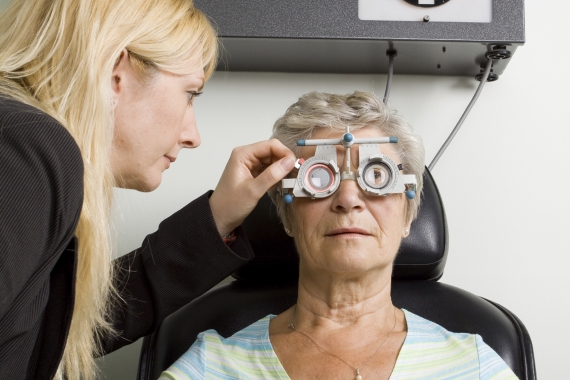Glaucoma Diagnosis
Glaucoma usually develops slowly and without any symptoms or pain. If you have had a glaucoma diagnosis or think you may be experiencing symptoms of the disease, it’s important to visit Elmquist Eye Group in Fort Myers or Cape Coral for a comprehensive dilated eye exam.
E. Trevor Elmquist, DO, Kate Wagner, OD and Nina Burt, OD are skilled at diagnosing glaucoma, even in its earliest stages, and can help you decide upon the best course of treatment.
 Dr. Elmquist is a board certified ophthalmologist with 25 years of experience who has been selected as one of America’s Top Doctors in ophthalmology. Drs. Wagner and Burt are board certified optometrists with extensive experience in the diagnosis and treatment of glaucoma and other eye diseases and conditions.
Dr. Elmquist is a board certified ophthalmologist with 25 years of experience who has been selected as one of America’s Top Doctors in ophthalmology. Drs. Wagner and Burt are board certified optometrists with extensive experience in the diagnosis and treatment of glaucoma and other eye diseases and conditions.
Glaucoma causes vision loss and eventual blindness by damaging the optic nerve, which carries visual information to your brain for processing. There is no cure for it yet, and lost vision cannot be regained.
Getting a comprehensive dilated eye exam at Elmquist Eye Group is the most important thing you can do to detect the disease before it damages your vision. When diagnosed and treated at an early stage, glaucoma can be controlled.
Open-Angle Glaucoma
Open-angle glaucoma, the most common form of the disease, occurs when the angle in the eye where the iris meets the cornea is as wide and open as it should be, but the drainage canals become clogged over time, causing an increase in internal eye pressure and damage to the optic nerve.
There are usually no warning signs or symptoms, and as much as 40% of your vision can be permanently lost before you begin to notice. For this reason, open-angle glaucoma is often called the “silent thief of sight.”
As damage to the optic nerve progresses, blank spots may begin to appear in your field of vision. This happens slowly, however, and you may not notice until there has been significant damage to the optic nerve.
Some people notice a gradual loss of peripheral vision – or side vision – usually in both eyes. If the glaucoma is not treated, the vision loss can move toward the center, causing tunnel vision and eventual blindness.
Closed-Angle Glaucoma
Closed-angle glaucoma is a more rare form of the disease. It generally occurs in people whose irises (the colored part of the eye) are not as wide or open as they should be. The outer edge of the iris can bunch up over the drainage canals, blocking them somewhat like a sink when something covers the drain.
Since the fluid cannot exit the eye, pressure can build very rapidly when drainage canals become blocked. The symptoms are noticeable and may get worse over a few hours. They include:
- Sudden severe eye pain
- Headache
- Nausea (along with the pain)
- Sudden blurred vision
- Sudden loss of vision in one eye
- Rainbows around lights at night
Closed-angle glaucoma is a true eye emergency. If you have any of these symptoms, seek immediate medical attention at an emergency room.
The symptoms do not necessarily mean that you have glaucoma, but they are signs of a potentially serious problem and must be treated quickly, or blindness could result.
Early diagnosis of glaucoma and treatment can help preserve your vision. Make an appointment today with Elmquist Eye Group at (239) 936-2020 to find out more about glaucoma treatment options that can minimize the irreversible effects of the disease.
